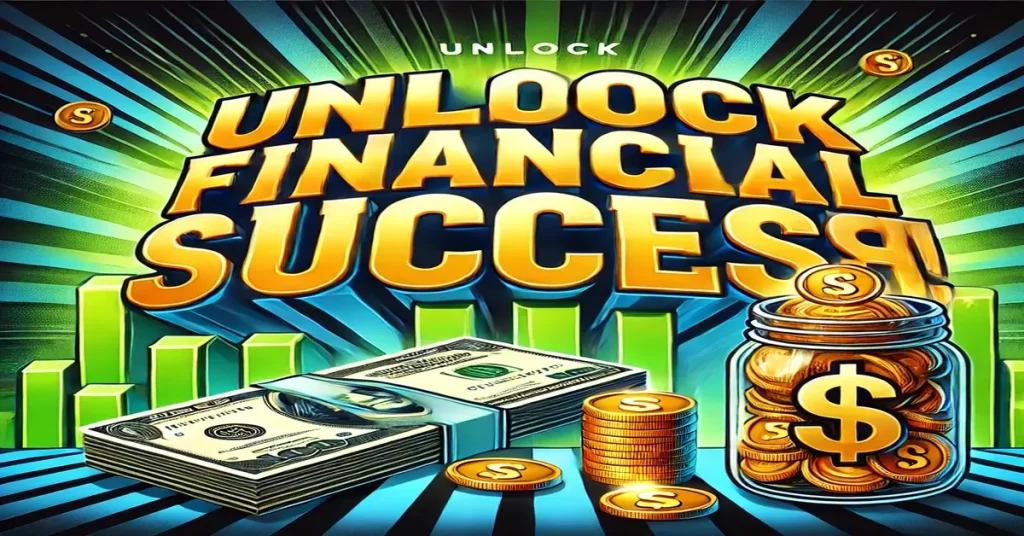
Everyday Finance Optimization
Discover expert strategies for mastering everyday finance in 2024. This guide covers budgeting, saving, investing, and reducing debt to maximize financial success
The key Everyday Finance Optimization to optimizing your daily money is to make thoughtful, little decisions that, over time, lead to better financial outcomes. Reducing unnecessary costs, boosting savings, and utilizing tools that provide financial insights are the keys to optimizing daily money. This comprehensive guide will assist you in making the most of your money and leading a more secure financial life.
Table of Contents
- Understanding Your Current Financial Situation
- Budgeting for Financial Success
- Maximizing Savings & Reducing Costs
- Using Credit Wisely
- Investing for Long-Term Growth
- FAQ: Everyday Finance Optimization
1. Understanding Your Current Financial Situation
Before you can optimize your finances, you need a clear understanding of where you currently stand.
Create a Financial Snapshot
Start by reviewing your:
- Income: All sources of income (salary, freelance, investments).
- Expenses: Fixed (rent, utilities) and variable (entertainment, dining).
- Debt: Credit cards, loans, and other liabilities.
To gain a general understanding of your spending habits, use budgeting applications such as Mint or You Need A Budget (YNAB). These tools can assist in identifying potential areas of expenditure.
2. Budgeting for Financial Success
A well-structured budget is the foundation of financial optimization.
Choose the Right Budgeting Method
- 50/30/20 Rule: Allocate 50% of your income to needs, 30% to wants, and 20% to savings and debt repayment.
- Zero-Based Budgeting: Every dollar is assigned a job, whether it’s for bills, savings, or discretionary spending.
Whichever method you choose, automate your savings and bill payments to ensure consistency.
3. Maximizing Savings & Reducing Costs
Saving isn’t just about cutting back—it’s about being smart with your money.
Find Easy Ways to Save on Daily Expenses
- Automate Savings: Set up automatic transfers to a savings account on payday.
- Meal Planning: Reduces the need for expensive takeout.
- Cancel Unnecessary Subscriptions: Review your subscriptions and cancel the ones you don’t use often.
Take Advantage of Discounts & Cashback
Use cashback app to get incentives for your purchases, such as Honey or Rakuten. To optimize your investments, think about utilizing certificates of deposit (CDs) or high-interest savings accounts.
4. Using Credit Wisely
Credit can be a tool or a trap—use it wisely for optimization.
Keep Your Credit Score Healthy
- Pay On Time: Always pay at least the minimum payment on your credit card and loans to avoid penalties.
- Limit Credit Utilization: Aim to use less than 30% of your available credit.
- Consider a Balance Transfer: For high-interest debt, a balance transfer to a 0% APR credit card can save money on interest.
5. Investing for Long-Term Growth
Once your budget is in check and your savings are growing, it’s time to start investing.
Start Small with Low-Cost Investments
You don’t need to be a stock market expert to start investing. Consider:
- Index Funds: Low-cost, diversified, and ideal for long-term growth.
- Robo-Advisors: Services like Betterment or Wealthfront can help automate investments based on your risk tolerance.
Max Out Retirement Accounts
Contribute as much as possible to a 401(k) match if your employer offers one; it is almost free money. Also, consider opening an IRA for additional tax advantages.
FAQ:
What is the 50/30/20 rule for budgeting?
The 50/30/20 rule is a simple budgeting technique that allocates 50% of your income to needs, 30% to wants, and 20% to savings or debt repayment.
How can I maximize my savings without cutting out all fun?
The key is to balance your spending on entertainment with cost-saving strategies. Opt for less frequent, but more meaningful splurges, and look for free or low-cost alternatives for regular fun.
What are some easy ways to improve my credit score?
Start by paying bills on time, lowering your credit utilization (keeping balances under 30% of your credit limits), and avoiding opening too many new credit accounts at once.
Should I invest while I have debt?
Your interest rates will determine this. Pay off your debt first if it has a high interest rate (more than 7-8%). Investing and paying off debt at the same time may make sense if your debt has lower interest rates.
My Thoughts
You will strengthen your financial base and become more capable of making well-informed decisions that maximize your daily financial situation if you adhere to this advice.
Consult professional assistance on financial management websites such as Investopedia and NerdWallet for more detailed strategies.










